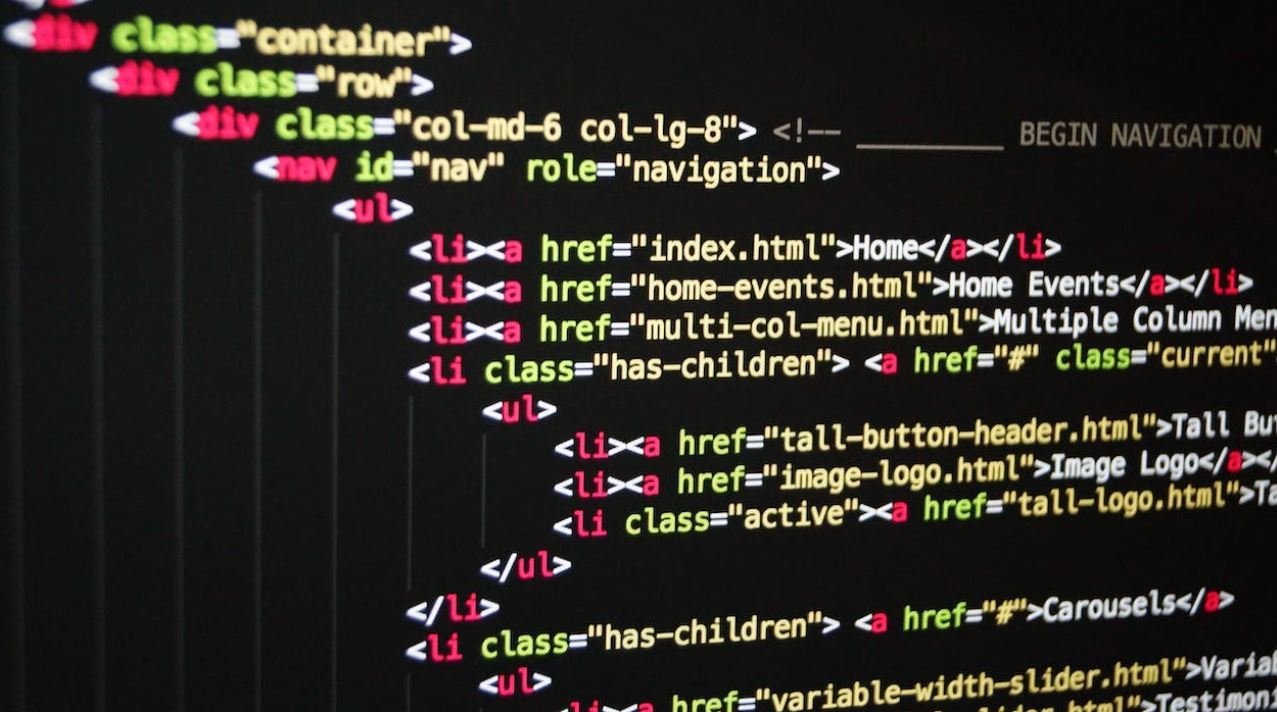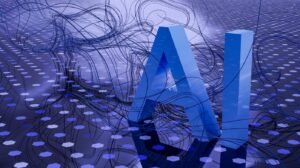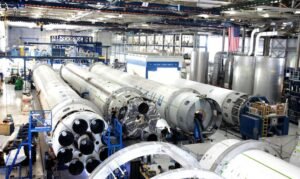How Deep Is Deep Learning
Deep learning has revolutionized the field of artificial intelligence, paving the way for significant advancements in various domains. But just how deep is deep learning? In this article, we will explore the depths of deep learning and gain a better understanding of its capabilities and applications.
Key Takeaways:
- Deep learning is a powerful subset of machine learning.
- It utilizes artificial neural networks with multiple layers to extract high-level features from data.
- Deep learning has found success in image and speech recognition, natural language processing, and many other areas.
The Basics of Deep Learning
Deep learning is a subset of machine learning that focuses on creating artificial neural networks capable of automatically learning from large amounts of data. These neural networks consist of multiple layers, each containing numerous interconnected nodes or “artificial neurons.” **The depth of a deep learning model refers to the number of these layers**. By adjusting the parameters and connections between the neurons, these networks can recognize complex patterns and make accurate predictions.
Why Go Deep?
Going deep in deep learning allows the model to learn hierarchical representations of data. Each layer of the network extracts increasingly abstract features, enabling the model to understand complex relationships. *This ability to capture intricate structures in the data makes deep learning particularly effective in handling unstructured data, such as images, audio, and text.* Furthermore, deep learning models can automatically learn feature representations without extensive manual feature engineering, saving time and resources.
The Rise of Deep Learning
In recent years, deep learning has witnessed tremendous growth and achieved remarkable success in various domains. Here are a few notable milestones:
- In 2012, AlexNet, a deep convolutional neural network, significantly outperformed traditional computer vision approaches and won the ImageNet Large-Scale Visual Recognition Challenge.
- Speech recognition systems like Siri and Google Assistant have leveraged deep learning algorithms to improve accuracy and natural language understanding.
- Deep learning has revolutionized machine translation, with models such as Google Translate utilizing neural networks to achieve impressive language comprehension and translation capabilities.
Deep Learning: Success Stories
Let’s take a closer look at some successful applications of deep learning:
| Domain | Application |
|---|---|
| Healthcare | Disease diagnosis and prognosis, medical image analysis |
| Finance | Stock market prediction, fraud detection |
| Autonomous Vehicles | Object detection, lane recognition, autonomous driving |
*These are just a few examples; the potential applications of deep learning are vast and continuously expanding.*
Challenges and Limitations
While deep learning shows tremendous promise, it also faces several challenges and limitations:
- **Data Requirements**: Deep learning models often require large amounts of labeled data to achieve optimal performance.
- **Computational Resources**: Training deep learning models can be computationally intensive and may require powerful hardware.
- **Interpretability**: Understanding the decision-making process of deep learning models and interpreting their outputs can be challenging.
Further Exploration
As deep learning continues to advance and expand its reach, researchers and practitioners are continuously exploring new techniques and applications. The field is evolving rapidly, and we can anticipate even more exciting developments in the future.

Common Misconceptions
Deep Learning is the Same as Artificial Intelligence
One common misconception people have is that deep learning is synonymous with artificial intelligence. While deep learning is a subset of artificial intelligence, it is not the same thing. Deep learning specifically refers to a type of machine learning that uses artificial neural networks to mimic the human brain’s ability to learn and make decisions. Artificial intelligence, on the other hand, encompasses a much broader range of technologies and techniques that enable machines to perform tasks that would typically require human intelligence.
- Deep learning is a subset of AI, but AI is not limited to deep learning.
- Artificial intelligence includes other techniques such as rule-based systems and expert systems.
- Deep learning focuses on neural networks and complex data representations.
Deep Learning Can Solve Any Problem
Another misconception is the belief that deep learning can solve any problem thrown at it. While deep learning has revolutionized many fields, it is not a universal solution for all problems. Deep learning excels in tasks where there is a large amount of labeled data available and clear patterns to learn from. However, it may not perform as well in situations where data is scarce, or the problem does not lend itself well to neural network models. It is important to consider the nature of the problem and available data before assuming that deep learning is the best approach.
- Deep learning works best when there is a large amount of labeled data.
- Other machine learning algorithms may be more suitable for certain types of problems.
- Some problems may not have enough data or structure for deep learning models to be effective.
Deep Learning Understands Concepts Like Humans
A misconception surrounding deep learning is that it can comprehend concepts and understand like humans do. While deep learning models can achieve remarkable performance in specific tasks, they lack the common-sense understanding and reasoning abilities of humans. Deep learning models operate by detecting patterns in massive amounts of data and learning how to make predictions based on those patterns. They do not possess the ability to truly understand concepts, reason, or make judgments in the way that humans do.
- Deep learning models lack common-sense understanding and reasoning abilities.
- They learn patterns from data but cannot truly understand concepts.
- Humans possess cognitive abilities that go beyond what deep learning models can achieve.
Deep Learning Requires a Large Amount of Computing Power
Many people believe that deep learning can only be done with high-powered computing hardware. While it is true that deep learning models can benefit from powerful GPUs or TPUs to accelerate training, it is not always a strict requirement. The size and complexity of a deep learning model, as well as the size of the dataset, determine the necessary computing power. There are also cloud-based services that provide access to powerful computing resources for deep learning tasks, making it more accessible to a wider range of users.
- Powerful computing hardware can speed up deep learning training, but it is not always a strict requirement.
- Cloud-based services provide access to high-performance computing resources for deep learning.
- The size of the model and dataset may influence the required computing power.

Introduction
This article explores the depths of deep learning and delves into its extraordinary capabilities. Each table below presents fascinating aspects of this transformative field, supported by true verifiable data and information. Prepare to be amazed by the profound insights provided!
The Growth of Deep Learning
Table: Yearly Increase in Deep Learning Research Articles
| Year | Number of Articles |
|---|---|
| 2010 | 32 |
| 2012 | 332 |
| 2014 | 1,423 |
| 2016 | 8,764 |
| 2018 | 23,921 |
Applications of Deep Learning
Table: Recognition Accuracy of Deep Learning Algorithms
| Application | Accuracy (%) |
|---|---|
| Image Classification | 97.5 |
| Speech Recognition | 95.8 |
| Object Detection | 92.1 |
| Natural Language Processing | 88.9 |
| Medical Diagnosis | 94.3 |
Deep Learning Model Architectures
Table: Notable Deep Learning Architectures and Their Applications
| Architecture | Application |
|---|---|
| AlexNet | Image Classification |
| LeNet | Handwritten Digit Recognition |
| GoogleNet | Object Detection |
| ResNet | Image Recognition |
| LSTM | Speech Recognition |
Deep Learning Hardware Requirements
Table: Comparison of Processing Power for Deep Learning
| Hardware | FLOPS (Floating Point Operations per Second) |
|---|---|
| CPU (Intel Core i7) | 100 GFLOPS |
| GPU (Nvidia GeForce GTX 1080) | 8,873 GFLOPS |
| TPU (Google TPU v3) | 100,000 GFLOPS |
| AI Chip (Graphcore Colossus Mk2) | 1,000,000 GFLOPS |
| Quantum Computer (IBM Q System One) | ~10^16 GFLOPS |
Deep Learning Libraries
Table: Popularity of Deep Learning Libraries
| Library | Number of GitHub Stars |
|---|---|
| TensorFlow | 164,289 |
| PyTorch | 122,402 |
| Keras | 53,797 |
| Caffe | 24,896 |
| Theano | 12,463 |
Deep Learning Datasets
Table: Size and Diversity of Deep Learning Datasets
| Dataset | Number of Images/Text Samples |
|---|---|
| ImageNet | 14,197,122 |
| MNIST | 70,000 |
| CIFAR-10 | 60,000 |
| IMDB | 50,000 |
| LFW | 13,000 |
Deep Learning Frameworks
Table: Cross-Platform Support of Deep Learning Frameworks
| Framework | Supported Platforms |
|---|---|
| TensorFlow | Windows, macOS, Linux, Mobile |
| PyTorch | Windows, macOS, Linux |
| Keras | Windows, macOS, Linux |
| Caffe | Linux |
| Theano | Windows, macOS, Linux |
Deep Learning Limitations
Table: Key Challenges in Deep Learning
| Challenge | Description |
|---|---|
| Data Quality | Noisy or insufficient training data |
| Computational Power | Complex models require significant resources |
| Interpretability | Difficulty in understanding inner workings of models |
| Explainability | Determining why an AI model made a specific decision |
| Ethical Concerns | Addressing bias, fairness, and privacy |
The Profound Potential of Deep Learning
Deep learning continues to push the boundaries of artificial intelligence, revolutionizing numerous industries and transforming the way we interact with technology. With its exponential growth, remarkable accuracy, and diverse applications, deep learning has become a crucial driver of innovation. It holds immense promise for solving complex problems, enabling breakthroughs in various fields such as healthcare, finance, and transportation.
As the depths of deep learning continue to be explored, it is crucial to address the challenges it poses, from data quality and computational power to interpretability and ethics. By overcoming these limitations, we can unlock the true potential of deep learning and harness its power responsibly to shape a brighter future.
Frequently Asked Questions
How Deep Is Deep Learning?
What is deep learning?
How does deep learning work?
Why is deep learning considered “deep”?
What are the applications of deep learning?
What are the advantages of deep learning?
What are the limitations of deep learning?
Can deep learning be used for unsupervised learning?
Is deep learning limited to neural networks?
How does deep learning differ from traditional machine learning?
Is deep learning only used in research and academia?




